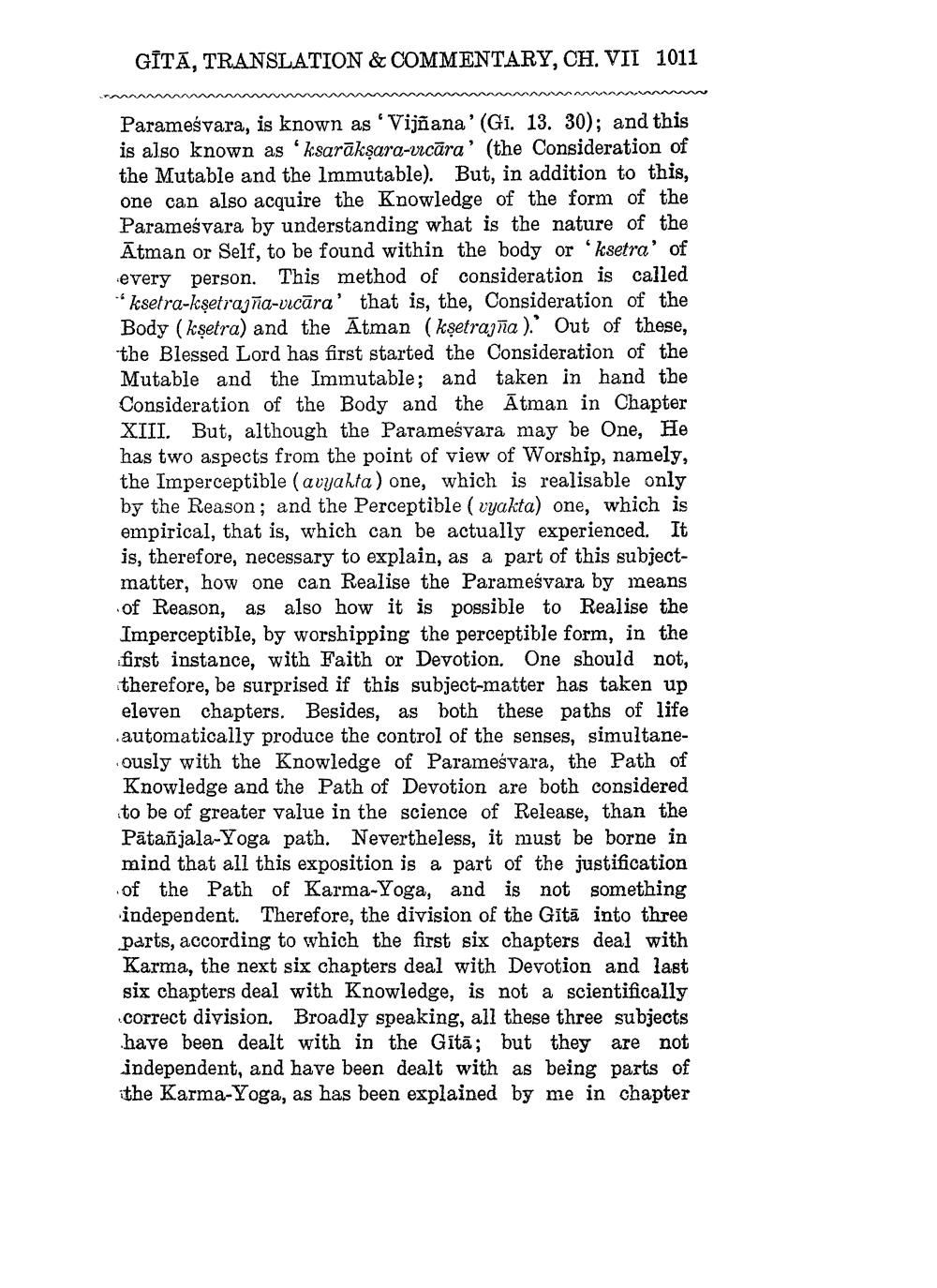________________
GĪTĀ, TRANSLATION & COMMENTARY, CH. VII 1011
Parameśvara, is known as 'Vijñana'(Gi. 13. 30); and this is also known as 'ksarāksara-vicāra' (the Consideration of the Mutable and the Immutable). But, in addition to this, one can also acquire the Knowledge of the form of the Parameśvara by understanding what is the nature of the Ātman or Self, to be found within the body or ‘ksetra' of every person. This method of consideration is called **ksetra-kşetrajña-vucāra' that is, the, Consideration of the Body (kşetra) and the Atman (kşetrajña). Out of these, the Blessed Lord has first started the Consideration of the Mutable and the Immutable; and taken in hand the Consideration of the Body and the Ātman in Chapter XIII. But, although the Parameśvara may be One, He has two aspects from the point of view of Worship, namely, the Imperceptible (avyahta) one, which is realisable only by the Reason; and the Perceptible ( vyakta) one, which is empirical, that is, which can be actually experienced. It is, therefore, necessary to explain, as a part of this subjectmatter, how one can Realise the Parameśvara by means of Reason, as also how it is possible to Realise the Imperceptible, by worshipping the perceptible form, in the first instance, with Faith or Devotion. One should not, therefore, be surprised if this subject-matter has taken up eleven chapters. Besides, as both these paths of life .automatically produce the control of the senses, simultaneously with the Knowledge of Parameśvara, the Path of Knowledge and the Path of Devotion are both considered to be of greater value in the science of Release, than the Pātañjala-Yoga path. Nevertheless, it must be borne in mind that all this exposition is a part of the justification of the Path of Karma-Yoga, and is not something independent. Therefore, the division of the Gītā into three parts, according to which the first six chapters deal with Karma, the next six chapters deal with Devotion and last six chapters deal with Knowledge, is not a scientifically correct division. Broadly speaking, all these three subjects have been dealt with in the Gitā; but they are not independent, and have been dealt with as being parts of the Karma-Yoga, as has been explained by me in chapter




